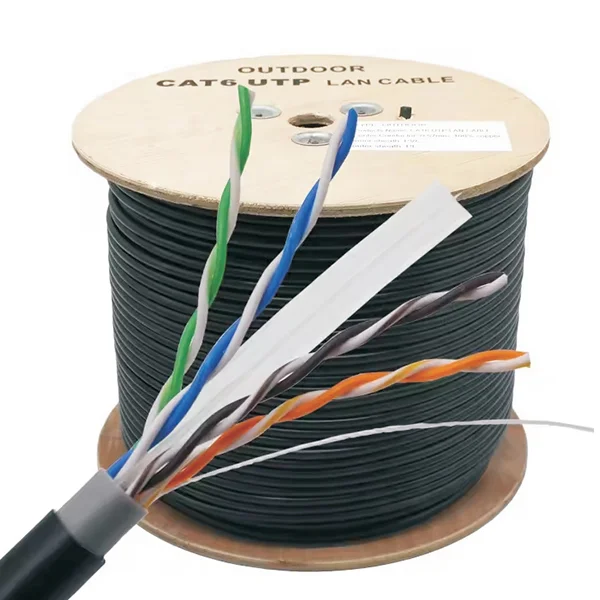- This topic is empty.
-
AuthorPosts
-
2025-08-22 at 3:52 pm #4365
In the digital age, seamless connectivity has become a cornerstone of modern life. From business environments to smart homes, the demand for reliable, high-speed data transmission continues to grow. Among the various cabling solutions available, Category 6 network cable—commonly known as Cat6—has established itself as a trusted standard. Designed to handle faster speeds and reduced interference, Cat6 cabling is the backbone of many contemporary networking infrastructures. In this blog post, as a high performance network cable manufacturing factory, Dingliang will share the role of category 6 network cable in modern connectivity.
What Makes Category 6 Ethernet Cable Unique?
The Category 6 Ethernet cable was introduced as an improvement over Cat5e cables, offering higher bandwidth and stricter crosstalk specifications. Supporting frequencies up to 250 MHz, it provides superior performance for gigabit and even 10-gigabit networks over limited distances. This makes Cat6 a forward-looking choice for organizations anticipating growing data demands. Its tighter twists, thicker gauge, and enhanced shielding options all contribute to its ability to deliver stable and secure data transfer.
Structural Design of Cat6 Cable
The architecture of a Category 6 LAN cable sets it apart. Inside, four twisted copper pairs are encased in a durable sheath that minimizes electromagnetic interference. Some Cat6 variants include a central plastic separator to further reduce crosstalk between pairs, ensuring higher transmission quality. This physical structure directly translates to better performance in environments where multiple devices are connected simultaneously.
Advantages of Category 6 Network Cable in Business Settings
Businesses today require stable networks that can handle video conferencing, cloud computing, and real-time collaboration. The Category 6 data cable offers:
-
Enhanced bandwidth capacity to support large file transfers and multimedia streaming.
-
Improved reliability compared to older cabling standards.
-
Future-proofing for upcoming networking technologies.
For office buildings, data centers, and commercial facilities, investing in Cat6 cabling provides the infrastructure needed for long-term scalability.

Category 6 Patch Cable for Flexible Connections
While structured cabling forms the network’s backbone, the Category 6 patch cable plays an equally important role. These shorter, flexible cables connect individual devices such as computers, printers, and servers to switches or routers. They ensure that the high-speed performance of the main Cat6 backbone is maintained all the way to the endpoint, reducing bottlenecks and maintaining efficiency.
Role of Category 6 LAN Cable in Smart Homes
The rise of smart devices in residential spaces has created new networking demands. A Category 6 LAN cable is increasingly being used in homes to support streaming services, online gaming, and IoT devices. Unlike wireless connections, which are susceptible to interference, wired Cat6 networks provide consistent speed and reduced latency—crucial for high-definition entertainment systems and home automation.
Category 6 Shielded Cable for High-Interference Environments
For industrial spaces, manufacturing plants, or areas with heavy electrical interference, the Category 6 shielded cable (STP) is particularly valuable. Its additional protective shielding prevents electromagnetic interference from affecting data transmission. By maintaining integrity in challenging environments, shielded Cat6 cabling ensures that critical operations are not disrupted by connectivity issues.
Comparing Category 6 Cable with Other Standards
When choosing cabling, it is essential to understand how Cat6 compares to other categories:
-
Cat5e vs Category 6 Cable: While Cat5e supports gigabit Ethernet, Cat6 provides higher frequency handling and better noise resistance.
-
Category 6 vs Cat6a Cable: Cat6a supports higher frequencies (up to 500 MHz) and longer 10-gigabit distances, but it is bulkier and costlier. Cat6 strikes a balance between affordability and performance.
-
Future Compatibility: For many small to medium businesses, Category 6 cable wiring offers the right mix of reliability and cost-efficiency without overinvesting in higher categories.
Installation Considerations for Category 6 Ethernet Cable
Proper installation is key to achieving the expected performance of Cat6. Factors such as maintaining bend radius, avoiding sharp kinks, and ensuring proper grounding are critical. Certified technicians often recommend testing each Category 6 structured cabling link to verify compliance with performance standards. Mistakes in installation can compromise the benefits of Cat6, leading to slower speeds and greater packet loss.
Sustainability and Category 6 Network Cable
With growing emphasis on eco-friendly infrastructure, many manufacturers now produce Category 6 cables that comply with environmental standards such as RoHS. By using recyclable materials and ensuring reduced hazardous substances, Cat6 solutions not only enhance connectivity but also contribute to greener practices in IT infrastructure.
Future of Networking with Category 6 Cable
As cloud computing, AI-driven applications, and high-definition content continue to evolve, the need for reliable connectivity will only increase. The Category 6 cable system provides a solid foundation for current networking demands while leaving room for future upgrades. Even as fiber optics expand, copper-based Cat6 cabling remains a cost-effective and widely adopted solution, bridging the gap between affordability and performance.
Conclusion
The Category 6 network cable is far more than just a wiring standard; it is a strategic investment in connectivity. With its ability to deliver higher speeds, reduced interference, and compatibility with both business and residential applications, Cat6 continues to play a central role in networking infrastructures worldwide. For organizations and homeowners seeking a balance of performance, scalability, and cost-effectiveness, Category 6 remains the preferred choice in the evolving digital landscape.
http://www.dlelectronic.com
Dingliang -
-
AuthorPosts
- You must be logged in to reply to this topic.
